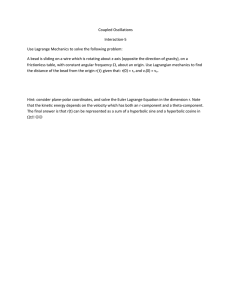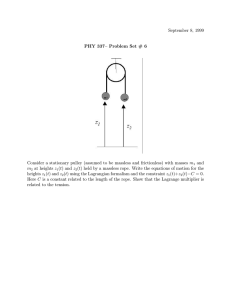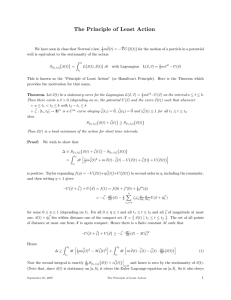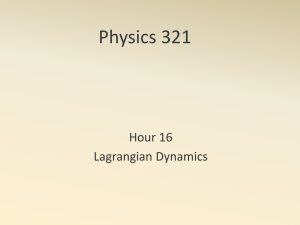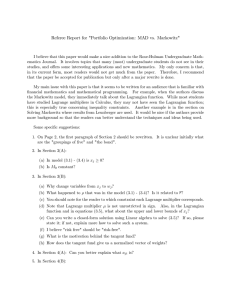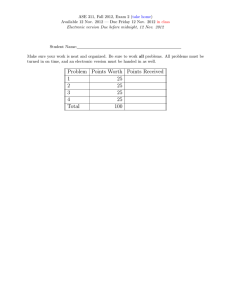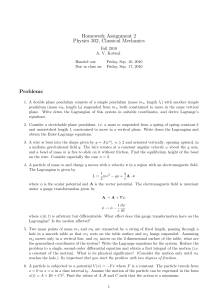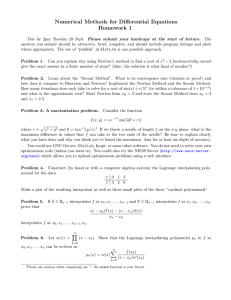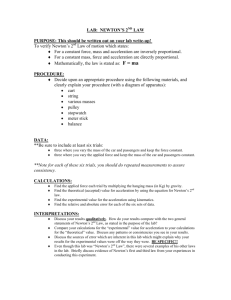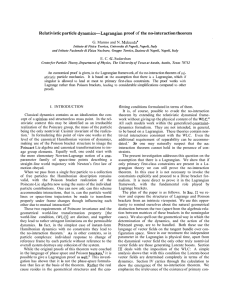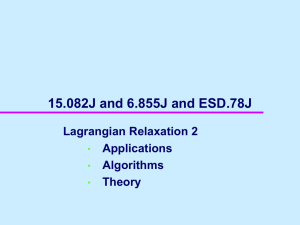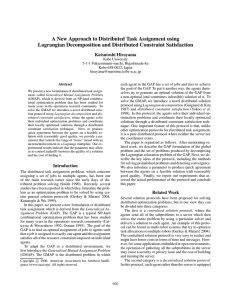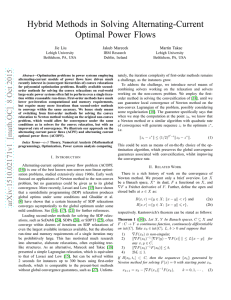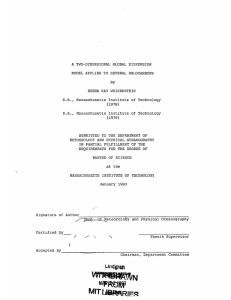The Lagrangian Method in the Introductory Course—C.E. Mungan, Fall 2008 m U
advertisement
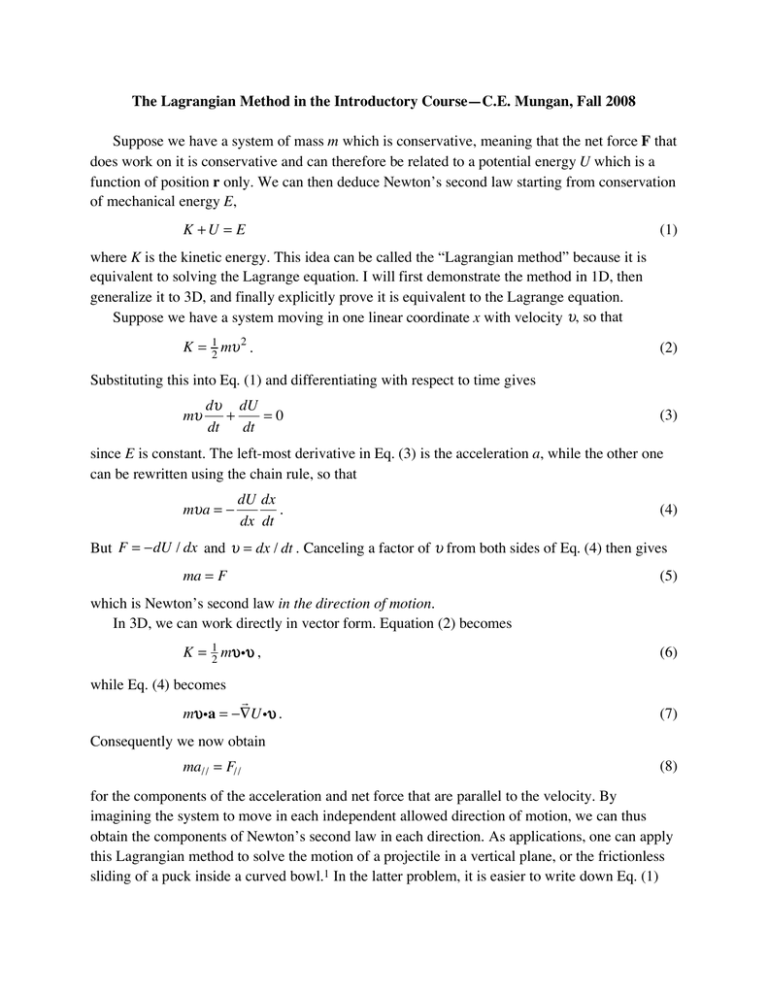
The Lagrangian Method in the Introductory Course—C.E. Mungan, Fall 2008 Suppose we have a system of mass m which is conservative, meaning that the net force F that does work on it is conservative and can therefore be related to a potential energy U which is a function of position r only. We can then deduce Newton’s second law starting from conservation of mechanical energy E, K +U = E (1) where K is the kinetic energy. This idea can be called the “Lagrangian method” because it is equivalent to solving the Lagrange equation. I will first demonstrate the method in 1D, then generalize it to 3D, and finally explicitly prove it is equivalent to the Lagrange equation. Suppose we have a system moving in one linear coordinate x with velocity , so that K = 12 m 2 . (2) Substituting this into Eq. (1) and differentiating with respect to time gives m d dU + =0 dt dt (3) since E is constant. The left-most derivative in Eq. (3) is the acceleration a, while the other one can be rewritten using the chain rule, so that m a = dU dx . dx dt (4) But F = dU / dx and = dx / dt . Canceling a factor of from both sides of Eq. (4) then gives ma = F (5) which is Newton’s second law in the direction of motion. In 3D, we can work directly in vector form. Equation (2) becomes K = 12 mi , (6) while Eq. (4) becomes mia = Ui . (7) Consequently we now obtain ma// = F// (8) for the components of the acceleration and net force that are parallel to the velocity. By imagining the system to move in each independent allowed direction of motion, we can thus obtain the components of Newton’s second law in each direction. As applications, one can apply this Lagrangian method to solve the motion of a projectile in a vertical plane, or the frictionless sliding of a puck inside a curved bowl.1 In the latter problem, it is easier to write down Eq. (1) than to begin from a force perspective, because the normal force serves only to constrain the puck to the bowl and does not do any work. The Lagrange equation of motion is L d L . = qi dt qi (9) Substituting L = K U , assuming rectangular coordinates so that qi = xi (where x1 x , x2 y , and x3 z ), and supposing that K is given by Eq. (6) and that U is only a function of position, then Eq. (9) becomes Fi = mai (10) which is equivalent to Eq. (8) if we restrict attention to the coordinates in the allowed directions of motion. Note that this treatment leaves off the angular degrees of freedom, but there is nothing in principle that prevents one from generalizing Eq. (6) to include terms like 12 Ii or even a tensor form of the moment of inertia. 1. S.A. Genis and C.E. Mungan, “Orbits on a concave frictionless surface,” J. Wash. Acad. Sci. 93, 7 (Summer 2007). Available online in PDF on my web site.
